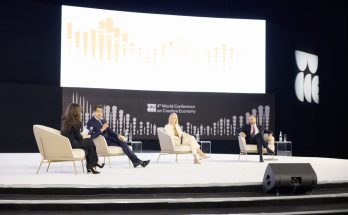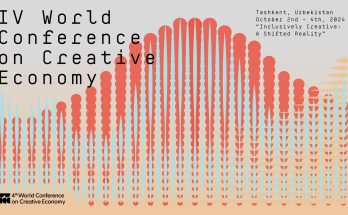 Videos, tweets, apps, and photo updates. Anything for jihad! The Sunni militant group, Islamic State of Iraq and Syria (ISIS), which is spearheading a violent insurgency in Iraq, is using myriad social media platforms with a vengeance – using online outlets to promote, recruit, and raise funds for its vicious campaign to establish a caliphate across the Gulf and Levant region.
Videos, tweets, apps, and photo updates. Anything for jihad! The Sunni militant group, Islamic State of Iraq and Syria (ISIS), which is spearheading a violent insurgency in Iraq, is using myriad social media platforms with a vengeance – using online outlets to promote, recruit, and raise funds for its vicious campaign to establish a caliphate across the Gulf and Levant region.
Fuelling its global reach is a social media strategy that manages to tap into trends ensuring maximum visibility to the group. Recently, ISIS used trending and popular hashtags such as #BrazilTweets, #ENG, #France and #WC2014; allowing it to access millions of World Cup twitter searches.
This hard-line Sunni group had earlier published horrific photos of abducted Iraqi soldiers lying on the ground with their hands tied behind their backs near what looked like empty mass graves. The captions for these photos were designed to mock and provoke Shiites. “The filthy Shiites are killed in the hundreds,” one read. “The liquidation of the Shiites who ran away from their military bases,” read another. The photos were seen around the globe.
Outreach is not limited to texts and photos alone. On June 21, the ISIS disseminated a much-publicised 13-minute video titled: There is No Life Without Jihad to reach out to Muslims in the West. The video shows a number of western Muslim recruits inducing other western Muslims to join them. The video has since then emerged in a number of channels on YouTube.
Some experts believe that the ISIS’ seemingly organic support base in social media is deceptive. An article in The Atlantic uses data from the group’s Twitter accounts and reports that the ISIS has been innovative in using a number of sophisticated techniques and machinery to magnify their apparent grassroots support.
Terror Inc. Moves Online
I t’s clearly a new phenomenon in the world of e-jihad. While the ISIS may have pioneered innovative techniques to increase its presence in social media, it is not the first or only jihadi group to do so.
t’s clearly a new phenomenon in the world of e-jihad. While the ISIS may have pioneered innovative techniques to increase its presence in social media, it is not the first or only jihadi group to do so.
Jihadi organisations including Al Qaeda, Al Shabaab, Islamic Jihad Union, Tehrik-e-Taliban Pakistan, Mehdi Army, Jabhat al Nusra, Jamaat-ud-Dawa (JuD), Indian Mujahideen and their numerous affiliates have all used social media. This move to the virtual world reflect a generational shift taking place within the propaganda machinery of jihadists, say experts.
A recent study of the Syrian jihadist group Jabhat al-Nusra’s (JN) Twitter profile, by Nico Prucha and Ali Fisher of the Combating Terrorism Center at West Point, highlighted the widespread network of this single organisation. The analysis, based on more than 76,000 tweets, containing more than 34,000 links to web-based content, identifies a content sharing network of more than 20,000 active Twitter accounts and a collection of YouTube video files that have been viewed nearly 450,000 times.
Jihadist media activists and fighters on the ground use social media to regularly upload videos, and photos which gets picked up by the numerous online jihadist forums and is repeatedly churned to generate massive viewership. Online forums, with large memberships, also act as potential influence multipliers.
Are governments losing propaganda war?
Trying to limit the jihadist presence online, especially on social media platforms, is a challenge the governments the world over are struggling to cope with. In May, the US State Department launched an experimental unit to actively fight Al Qaeda ideologists on Twitter. The efficiency of a strategy that engages in trolls against jihadi forums is highly contested. By engaging with these groups, instead of changing their thinking, they may aid in raising the profile of the jihadi activists, argue some experts. Another option is to impose a complete ban on these accounts.
Social media sites now have strict rules that allow it to remove groups and posts that incite hate and violence. Facebook recently shut down a host of pages that sold T-Shirts, hoodies and action figures, endorsing the ISIS. “At Facebook, we have rules that bar direct statements of hate, attacks on private individuals and groups, and the promotion of terrorism,” said a Facebook statement from spokesman Israel Hernandez.
Twitter, which for long resisted censorship, now has a policy that prevents groups from publishing or posting direct, specific threats of violence against others. In January 2013, Twitter deactivated an account belonging to Al Shabaab, a militant Somali group on the US list of foreign designated terrorist organizations. The problem, however, was that Al Shabaab simply opened other Twitter accounts under different names. Groups, once banned, form similar groups and continue networking on social media; they have also learnt how to avoid detection, by removing words that get their posts flagged, enabling them to get their message out.
Another problem with suspending accounts based on tweets is that the information previously available through the groups themselves becomes inaccessible. On June 13, when Twitter suspended an account, @Nnewsi, journalist and WikiLeaks were up in arms as the account had been tweeting news of ISIS’s manoeuvres, providing journalists and others with a direct account of the group’s actions.
And then there is the Streisand Effect, where the removal of terrorist accounts might shut it off temporarily, but has the unintended consequence of amplifying its reach.
While some experts believe that assorted social media platforms are not enough to turn people into radical jihadists, it does play an important role in promoting its ideology of hate and violence.
The nature of the ungoverned social space is often considered a boon. Indeed it was social platforms like Twitter that fuelled the Arab Spring. Since then the social media has shown its potential to turn into a Frankenstein’s monster. The desperate need to fight jihadist organisation active on social media sites, without limiting the access to free information, is a challenge that the governments have to learn to deal with. As jihad moves online, defeating its insidious communication networks will require a comprehensive strategy and increased trans-national cooperation. This information war must be won, at all costs.
Author Profile
- India Writes Network (www.indiawrites.org) is an emerging think tank and a media-publishing company focused on international affairs & the India Story. Centre for Global India Insights is the research arm of India Writes Network. To subscribe to India and the World, write to editor@indiawrites.org. A venture of TGII Media Private Limited, a leading media, publishing and consultancy company, IWN has carved a niche for balanced and exhaustive reporting and analysis of international affairs. Eminent personalities, politicians, diplomats, authors, strategy gurus and news-makers have contributed to India Writes Network, as also “India and the World,” a magazine focused on global affairs.
Latest entries
 DiplomacyOctober 4, 2025UNGA Resolution 2758 Must Not Be Distorted, One-China Principle Brooks No Challenge
DiplomacyOctober 4, 2025UNGA Resolution 2758 Must Not Be Distorted, One-China Principle Brooks No Challenge India and the WorldJuly 26, 2025MPs, diplomats laud Operation Sindoor, call for national unity to combat Pakistan-sponsored terror
India and the WorldJuly 26, 2025MPs, diplomats laud Operation Sindoor, call for national unity to combat Pakistan-sponsored terror India and the WorldJuly 25, 2025When Fire Ends, Diplomacy Begins
India and the WorldJuly 25, 2025When Fire Ends, Diplomacy Begins India and the WorldJuly 16, 2025Operation Sindoor and its Aftermath: India’s Successful Diplomatic Outreach
India and the WorldJuly 16, 2025Operation Sindoor and its Aftermath: India’s Successful Diplomatic Outreach







